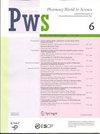MICROSCOPIC TRAFFIC FLOW MODEL WITH INFLUENCE OF PASSENGER TRANSPORT
引用次数: 0
Abstract
To analyze the influence of passenger transport on traffic flow, we develop a microscopic traffic flow model that incorporates various factors such as vehicle speed, acceleration, deceleration, lane-changing behavior, and interaction between different types of vehicles. The model takes into account the specific characteristics of passenger transport vehicles, their behavior in mixed traffic, and their impact on the overall traffic flow. We conducted extensive simulations using the developed microscopic traffic flow model to evaluate the influence of passenger transport on the traffic flow characteristics. The simulations were based on real-world scenarios and considered different traffic conditions, including varying traffic volumes. Our results demonstrate that the presence of passenger transport vehicles has a significant impact on the microscopic characteristics of traffic flow on country roads. We observed that the introduction of passenger transport vehicles affects the overall traffic flow dynamics, including vehicle speeds, acceleration patterns, and lane-changing behavior of both passenger transport and other vehicles in traffic flow. Furthermore, we found that the interaction between passenger transport and other vehicles plays a crucial role in determining the traffic flow characteristics. Additionally, our study highlights the importance of considering passenger transport in traffic flow models and transportation planning. The presence of passenger transport vehicles can significantly impact the overall performance of the road network, including travel time, congestion, and safety. Therefore, incorporating the characteristics and behavior of passenger transport vehicles into traffic flow models can provide more accurate predictions and assist in developing effective traffic management strategies. In conclusion, this study contributes to a better understanding of the influence of passenger transport on the microscopic characteristics of traffic flow on roads. The developed microscopic traffic flow model provides valuable insights into the behavior of passenger transport vehicles and their interaction with other vehicles, leading to a comprehensive understanding of traffic flow dynamics. The findings of this study can aid transportation planners and policymakers in making informed decisions for improving the efficiency, safety, and sustainability of road networks.考虑客运影响的微观交通流模型
为了分析客运对交通流的影响,我们建立了一个微观交通流模型,该模型包含了车辆速度、加减速、变道行为和不同类型车辆之间的相互作用等多种因素。该模型考虑了客运车辆的特定特性、混合交通中的行为以及对整体交通流的影响。利用建立的微观交通流模型进行了大量的模拟,以评估客运对交通流特征的影响。这些模拟是基于现实世界的场景,并考虑了不同的交通状况,包括不同的交通量。研究结果表明,客运车辆的存在对乡村道路交通流微观特征有显著影响。我们观察到客运车辆的引入影响了整体交通流动力学,包括交通流中客运车辆和其他车辆的速度、加速模式和变道行为。此外,我们发现客运与其他车辆之间的相互作用在决定交通流特征方面起着至关重要的作用。此外,我们的研究强调了在交通流模型和交通规划中考虑客运的重要性。客运车辆的存在可以显著影响道路网络的整体性能,包括旅行时间、拥堵和安全。因此,将客运车辆的特征和行为纳入交通流模型可以提供更准确的预测,并有助于制定有效的交通管理策略。综上所述,本研究有助于更好地理解客运对道路交通流微观特征的影响。所建立的微观交通流模型为客运车辆的行为及其与其他车辆的相互作用提供了有价值的见解,从而使人们对交通流动力学有了全面的了解。本研究的结果可以帮助交通规划者和决策者做出明智的决策,以提高道路网络的效率、安全性和可持续性。
本文章由计算机程序翻译,如有差异,请以英文原文为准。
求助全文
约1分钟内获得全文
求助全文

 求助内容:
求助内容: 应助结果提醒方式:
应助结果提醒方式:


